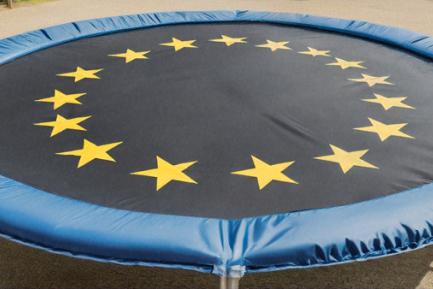Does the euro area have an investment problem?
In 2015 the rate of growth for investment in the euro area accelerated to 3.1%. But from a slightly broader perspective investment has yet to return to the levels reached before the crisis and the underlying trend is weaker than in other recoveries. This has led several international institutions (the IMF, OECD and the European Commission) to suggest that measures should be taken to encourage investment. With the aim of evaluating to what extent there are reasons to be concerned, we will analyse why investment is less dynamic than usual.
The relative share of investment in the euro area went from 19.8% of GDP in 1996 to 22.3% in 2007, a peak that had still not been repeated in 2015 in spite of gains being recorded as from 2013. To a large extent this trend is due to fluctuations in investment in construction which includes the excesses committed before the crisis. Gross fixed capital formation, excluding construction, saw a more stable trend of 8.2% of GDP in 1996 up to 10.4% in 2008, another peak that has yet to be repeated. It is important to note that not all the components of investment have behaved equally: investment in intellectual property rights has grown steadily, even during the crisis years (at an annual rate of 8% on average and reaching 3.85% of GDP in 2015) while the level of machinery and capital goods investment has remained at around 6% of GDP throughout the period and has even lost share as a percentage of the total investment.1
Several structural changes in the euro area economies explain why investment requirements have altered. The growing importance of the services sector in detriment to industry has altered the composition of the production structure and has reduced investment requirements as the former is less investment-intensive than the latter. According to the OECD, in countries such as Italy and France this change has led to a reduction in investment requirements of around 0.5 pps in the ratio of investment to GDP between 1997 and 2013. Globalisation has also led to a larger proportion of world investment going to emerging economies over the same period. An increase in investment abroad can equally reduce the need to invest in the country (the substitution effect) or increase it (the complementary effect) but the impact has not been the same for all countries (more substitution in the United Kingdom and more complementary in Germany, for example).2
Technological change has also pushed investment towards intangible capital and ICTs, reducing the need to invest in physical capital, as we have seen. Higher investment in intangibles is important as it is associated with higher economic growth per capita3 but it should be noted that not all intangibles are measured in the national accounts (R&D expenditure and software are included but not advertising or training, for instance) and are therefore undervalued. In addition to this undervaluation of investment is the fact that falling technology prices mean that investment in ICTs can increase in real terms while investing the same resources in nominal terms.
In summary, various structural factors affect investment and show that it is not easy to determine whether the current level of investment is low. In any case it is important to analyse the trend in investment over the longer term while also taking its composition into account.
1. Investment in machinery and equipment has gone from accounting for 67% of the total investment in 1996-2000, excluding construction, to accounting for 62% in 2010-2015.
2. See the Bank of Spain, «La debilidad de la inversión empresarial en las economías desarrolladas», Boletín Económico. no. 57, July-August 2015 and OECD, «Lifting investment for higher sustainable growth», OECD Economic Outlook, Volume 2015/1, Chapter 3.
3. See Corrado et al. (2012), «Intangible Capital and Growth in Advanced Economies: Measurement Methods and Comparative Results», IZA DP 6733.



